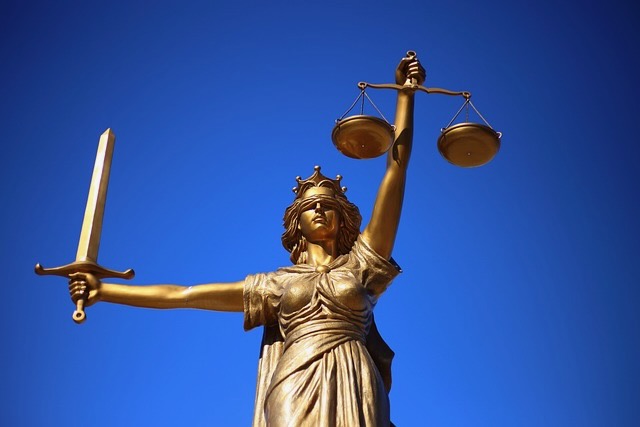Trends in Stenography and Voice Writing
In the evolving world of court reporting, the importance of capturing accurate legal proceedings remains paramount. While traditional methods like stenography and voice writing continue to play a significant role, technological advancements have introduced new methodologies and approaches that are changing the landscape of this vital profession. This article delves deep into the trends surrounding stenography and voice writing, examining how these methods function, their advantages and disadvantages, and their future prospects.
The Essence of Stenography
Stenography, often referred to as shorthand, involves the use of a specialized machine known as a stenotype to write spoken words in real-time. Court reporters employ their skills to transcribe everything said during legal proceedings, capturing not only dialogue but also nuances like tone and emphasized phrases. This art requires rigorous training and involves mastering the machine’s keyboard, which has fewer keys than a standard keyboard, allowing for an almost instantaneous capture of speech.
Stenographers have a unique advantage in managing multiple speakers and diverse accents. Their acute listening skills, honed through experience, equip them to distinguish between different voices, inflections, and contextual clues that provide context and meaning, which is especially crucial in legal environments where clarity is vital. In essence, the ability to recognize diverse linguistic patterns is a key skill that widely separates live court reporters from digital alternatives.
- Stenography requires significant training and practice.
- Stenographers must be adept at multiple accents and speaker differentiation.
- The stenotype machine allows for rapid transcription of spoken words.
The Evolution of Voice Writing
Voice writing, another method of court reporting, uses a voice silencer and captioning software to capture spoken words. The court reporter speaks directly into a microphone equipped with a speech recognition engine, which transcribes the audio in real-time. This method seeks to achieve similar levels of accuracy as stenography while also benefiting from advancements in technology.
Voice writing emerges as a complement to traditional stenography—providing an alternative that can increase accessibility and efficiency. For instance, in settings where a stenographer may struggle to manage both speed and clarity, voice writing can offer an additional layer of reliability. Furthermore, the voice writing process allows reporters to insert notes and annotations while recording, enhancing the overall completeness of the transcript.
- Utilizes speech recognition software for real-time transcription.
- Enables immediate annotations during the recording process.
- Increasingly recognized as a valuable complement to traditional methods.
Current Trends in Court Reporting
The court reporting industry is experiencing significant transformations, largely driven by digital advancements and changing societal needs. One major trend is the integration of cloud services for storage and accessibility. Digital transcripts can now be stored securely online, allowing attorneys and clients to access documents from anywhere in the world. This shift not only enhances usability but also opens doors for more streamlined collaboration among legal teams.
Remote reporting has also gained traction, especially post-pandemic, when many court proceedings transitioned to virtual settings. Court reporters are now required to master digital platforms and adapt to the nuances of online interactions, increasingly using tools like Zoom or Microsoft Teams to ensure they can continue providing their services effectively. This evolution necessitates ongoing education and adaptability among reporters, leading to a new generation of tech-savvy professionals.
- Cloud services offer enhanced storage and accessibility for transcripts.
- Remote reporting via digital platforms has become more common.
- Flexibility is now key for court reporters looking to stay relevant.
Challenges and Considerations
As these trends continue to evolve, several challenges persist. One of the primary concerns with voice writing is the reliance on speech recognition technology, which is not always perfect. Accents, dialects, and fast speech can lead to inaccuracies in transcripts, which can create substantial legal ramifications. Although voice writing offers ease of use, maintaining a high standard of accuracy is essential, and human oversight is often required to confirm output quality.
Stenography, while reliable, also faces challenges as the pool of traditional stenographers decreases. Many younger professionals are gravitating toward voice writing or other digital solutions due to perceived ease and flexibility. The industry must work to attract and train new stenographers to embrace this tradition and ensure it does not become a lost art.
- Speech recognition technology poses accuracy concerns.
- A decreasing number of traditional stenographers is a challenge for the industry.
- Finding a balance between traditional and emerging methods is crucial.
The Future of Court Reporting
Looking ahead, it’s essential for both stenographers and voice writers to embrace continued learning. As artificial intelligence (AI) develops, tools that enhance accuracy and efficiency are likely to emerge. Hybrid models that combine the best aspects of both methodologies could become commonplace, offering the ability to switch between stenography and voice writing as context demands.
The legal profession must also adapt to these changes by recognizing the worth of skilled court reporters—whether they use a stenotype machine or a voice writing approach. Ongoing professional development will be crucial in helping reporters stay competitive in this dynamic environment. Legal practitioners need to advocate for the importance of high-quality transcript services, emphasizing that despite the rise of technology, nothing can truly replicate the nuance and understanding that only a trained court reporter can provide.
- Continued learning and adaptation are essential for court reporters.
- Hybrid models may offer the best of both stenography and voice writing.
- Advocating for quality transcript services will be crucial moving forward.
Frequently Asked Questions (FAQs)
What is the difference between stenography and voice writing?
Stenography uses a specialized machine to capture spoken words in real time, while voice writing involves a court reporter speaking into a microphone and using speech recognition software to transcribe the dialogue.
Is stenography considered more accurate than voice writing?
While both methods aim for accuracy, stenography has a long-standing reputation for capturing speech nuances effectively, especially in challenging environments. Voice writing accuracy heavily relies on the performance of the speech recognition software.
Will court reporting jobs become obsolete due to technology?
While technology impacts the field, skilled court reporters who adapt and embrace new methods will continue to be valuable for legal proceedings. There will always be a need for human oversight in ensuring accuracy and context in transcripts.
References
For readers wishing to explore further, please consider the following resources:
- National Court Reporters Association (NCRA) – A comprehensive resource for professionals in the field.
- The Balance Careers: Court Reporter Overview – An overview of the court reporting profession, including job outlook and salary expectations.
- Legal Tech News: Adapting Court Reporting in a COVID-19 World – Insights into how the pandemic has affected court reporters and legal proceedings.
Conclusion
The realm of court reporting is at a crossroads, balancing the long-standing traditions of stenography against the tide of digital innovation embodied in voice writing. Both methods have unique advantages and are essential for the legal community’s pursuit of justice and clarity. As technology advances, the profession must remain vigilant in maintaining high standards while also adapting to innovative solutions that can enhance accuracy, efficiency, and accessibility. The future will undoubtedly witness further evolution in both practices, ensuring that the art of capturing spoken words remains a critical component of the legal system, serving not just the legal profession but society as a whole.

About McCorkle Litigation Services
McCorkle Litigation Services is a premier provider of comprehensive litigation support, specializing in delivering exceptional court reporting services to legal professionals. With decades of experience in the industry, McCorkle has built a reputation for reliability, accuracy, and professionalism. Their team of certified court reporters is adept at capturing every word of legal proceedings with precision, ensuring attorneys and clients have access to impeccable records. Whether it’s depositions, trials, arbitrations, or hearings, McCorkle’s expertise extends across a wide array of legal matters, making them a trusted partner in the litigation process.
The experienced court reporters at McCorkle Litigation Services are highly trained in the latest technologies, including real-time transcription and video deposition synchronization. This ensures that clients receive timely and efficient services tailored to meet the demands of modern legal practices. McCorkle’s commitment to accuracy and confidentiality is unwavering, offering peace of mind to legal teams who require reliable documentation of critical proceedings. Backed by a legacy of excellence and a dedication to client satisfaction, McCorkle Litigation Services continues to set the standard for court reporting and litigation support nationwide.







